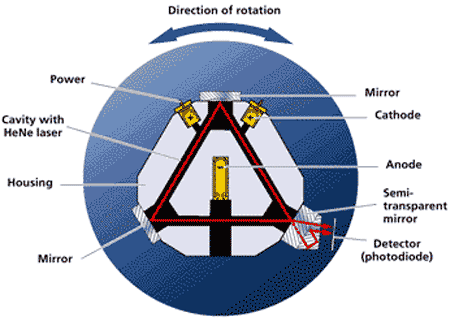Your typical optical gyroscope is used as an orienting device to calculate a ship or an airplane’s exact position by measuring rotation rates on three axes. What if we could use that same technology only on a smaller scale, on the nano-scale?
Scientists at Tel Aviv University have recently designed, in conjunction with Israel’s Department of Defense, a nano optical gyroscope that can fit on a microchip without altering its sensitivity. Prof. Koby Scheuer of TAU’s School of Physical Engineering and a team of researchers developed these micro-gyroscopes to detect smaller rotation rates, transfer better accuracy, and consist of smaller dimensions.
Inside the gyroscope are very small semi-conductor lasers that when they start to revolve the light produced changes, which include wavelength and intensity. Turn rates can then be calculated measuring the differences. The lasers used are super small, measuring only in tens of micrometers in diameter, which can then be assembled in a 0.04mm X 0.04mm shell about the size of a grain of salt.
"Conventional gyroscopes look like a box, and weigh two or three pounds, this is fine for an airplane, but if you're trying to fit a gyroscope onto a smaller piece of technology, such as a cell phone, the accuracy will be severely limited.", said Prof. Scheuer. This will also give people in the medical field the ability to track small devices such as a camera or other device inside their patients for certain operations. No one wants to have medical instruments left inside them when they leave the hospital. While this new nano-gyroscope will undoubtedly change our own use of personal GPS devices in our cell phones and such, will it also hinder us as well? Think of the phone companies or government agencies being able to more effectively track the average person. Should this technology be regulated at the very least or thrown to chance and see what the ramifications are?
Eavesdropper

